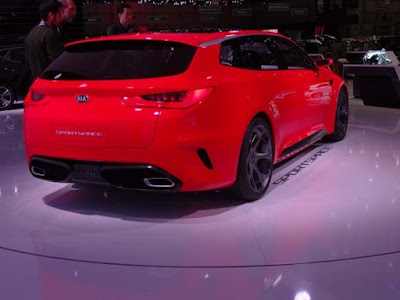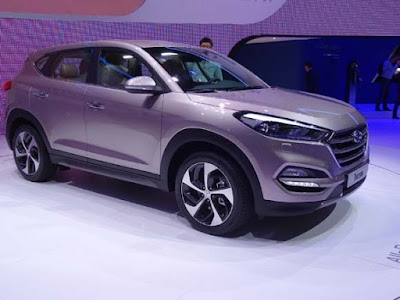Serving up more power with less weight, improved aerodynamics and a healthy measure of enhanced technology thrown in for good measure, the 2015 Lamborghini Aventador LP 750-4 Superveloce - SV for short -- bowed at Geneva as a more exotic take on one of the world's most stunning supercars
Based on the Aventador LP 700-4 Coupe, the new SV pushes the limits emerging as "the fastest and most emotional series-production" Lambo ever to roll out of the Sant'Agata Bolognese factory. To help trim 110 pounds from the carbon-composite intense baseline Aventador, Lamborghini engineers further optimized the monocoque and its aluminum subframes and replaced the alloy body panels as well as the new rear wing and air intakes with either carbon fiber or superlight Sheet Molding Compound (SMC). The interior came under the same mass-reducing scrutiny, where carbon fiber door panels and racing style shell buckets lessened mass, as did dispensing with the standard infotainment system - still on offer at no added cost - conventional carpeting and a fair bit of sound insulation. It also boasts a new yellow TFT screen for its digital instrument cluster with a blue upshift indicator and a G-force indicator in the lower part of the main display
Less restrictive exhaust
On the motivation front, upgrades to the Variable Valve Timing and Variable Intake System on its mid-mounted 6.5-liter naturally aspirated V12 coupled with all-new lighter and less-restrictive exhaust plumbing contributed to a gain of 50 horsepower - which works out to 739 horsepower. Redline has also been lifted from 8,400 to 8,500 rpm. Collectively, the revamps improved overall power to weight ratio by 10 percent on the 3,362-pound Aventador SV, trimming its 0-62 mph time by 0.1 second -- to 2.8 ticks - and helping it reach a top speed of over 217 mph
Fed to Lambo's 7-speed ISR automated manual transmission that prodigious power heads to all four wheels via the latest Haldex IV electronically controlled AWD setup. Like the standard Aventador, the SV uses a racing style pushrod chassis with adaptive Magneto Rheological Suspension (MRS) shocks and a new variable-ratio electromechanical Lamborghini Dynamic Steering (LDS) system that adapts to road speed and the Strada/Sport/Corsa mode settings available on the SV's Drive Select system. Other SV touches include 20-inch front/21-inch rear alloy wheels - available with racing-style center locks -- wrapped in Pirelli P Z Corsa performance tires and standard Carbon Ceramic Brakes
To keep the Aventador LP 750-4 Superveloce securely planted at speed and enhance its cornering prowess, the two-seater also benefits from a comprehensive aero tweaking. The front end has a more open appearance with a bolder and deeper splitter and twin wing elements as well as larger air intakes to further improve brake cooling. That same openness carries to the rear treatment, where the 3-way manually adjustable wing is matched with a revised and more efficient lower diffuser separated by a black mesh insert that helps extract heat from the engine compartment. Lamborghini says the revisions optimize the SV's total aero signature by 150 percent and increase downforce by 170 percent compared to the baseline Aventador
The 2015 Lamborghini Aventador LP 750-4 Superveloce goes on sale later this spring and will start at just over $366,000. No word yet on what that figure will be in the U.S. or when the first cars will arrive here




















































